What's New
Displaying results 2011 - 2020 of 4052
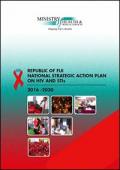
Resource | Publications,
Twenty seven [27] years have elapsed since the first HIV case was reported in Fiji in 1989. Since then, in recognising HIV and AIDS as a development issue, the Government, through the collaboration of stakeholders and the coordination of the Ministry of Health and Medical Services, has sustained a national response, in conformity with the changing profile of the epidemic. As with the previous National Strategic Plan (NSP) for STIs, HIV & AIDS, this strategic plan has been updated and expanded to ensure that the response reaches beyond the health sector. Due to the diverse range of factors that have influenced the epidemic, multi-sectoral partners including other government partners, civil society organisations, faith-based organisations and the key affected populations have been actively involved, not only in the planning and the development of the national response, but also in the implementation of the national plan. Fiji’s coordinated multi-sectoral response is showing positive achievements.
The National Strategic Action Plan (NSP) 2016-2020 on STIs, HIV and AIDS is linked to the Sustainable Development Goals (SDG), the ambitious treatment strategy [90-90-90] and the Fiji Ministry of Health and Medical Services Strategic Plan 2016-2020. This NSP will continue to place strong emphasis on strengthening the multi-sectoral collaboration as undertaken in the previous NSPs.
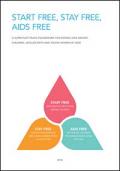
Resource | Publications,
The ‘Start Free, Stay Free, AIDS Free’ Super-Fast- Track framework and action plan builds on remarkable success achieved between 2011 and 2015 in reducing the number of new HIV infections among children as well as increasing the number of children with HIV on treatment.
It provides a menu of policy and programmatic actions designed to enable countries and partners to close the remaining HIV prevention and treatment gap for children, adolescents young women, and expectant mothers.
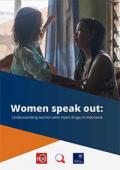
Resource | Publications,
Indonesia is home to about 74,000 people who inject drugs, of whom 11% are women. Compared with men who inject drugs, women who inject drugs experience an elevated risk of HIV and other blood borne virus transmission, disproportionately high rates of violence from both intimate and non-intimate partners, and social exclusion. Despite their specific needs and greater marginalisation, this group has been largely neglected in Indonesia’s national HIV strategy.
The study explored sexual and injecting behaviours, health indicators, gender-based violence, contact with law enforcement, and uptake of health and support services among women who inject drugs. The broad objective of the study was to better understand the experiences of women who inject drugs and to inform evidence-based responses that can mitigate the impacts of drug use and HIV and AIDS on this vulnerable population in Indonesia.
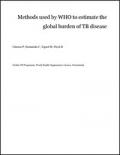
Resource | Publications,
This paper describes methodological details used by WHO in 2016 to estimate TB incidence, prevalence and mortality. Incidence and mortality are disaggregated by HIV status, age and sex. Methods to derive MDR-TB burden indicators are detailed. Four main methods were used to derive incidence: (i) case notification data combined with expert opinion about case detection gaps (74 countries representing 22% of global incidence in 2015); (ii) results from TB prevalence surveys (20 countries, 62% of global incidence); (iii) notifications in high-income countries adjusted by a standard factor to account for under-reporting and underdiagnosis (118 countries, 15.5% of global incidence) and (iv) capture-recapture modelling (5 countries, 0.5% of global incidence). Mortality was obtained from national vital registration systems of mortality surveys in 128 countries (52% of global HIV-negative TB mortality). In other countries, mortality was derived indirectly from incidence and case fatality ratio.

Resource | Publications,
With support from UNICEF EAPRO, Youth LEAD aims to surface the issues of adolescent key populations including adolescents living with HIV through their personal stories. This book presents seven stories of adolescents in three countries, namely, Thailand, China and the Philippines with an aim to inform ways to support and strengthen HIV programming and policy development in the region. Most importantly, these stories reflect realities of adolescents from key populations that may inspire other adolescents on how they are able to weather the storm and fight for their rights.
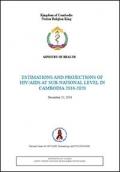
Resource | Publications,
As a result of the declining epidemic in Cambodia and evolving responses, over the last two years national stakeholders have started conducting epidemiological and programmatic analysis at the sub-national level. Therefore, the programme needs province specific estimation and projections to guide programme implementation and track the response at decentralized level as it moves towards national elimination targets. This has generated a strong demand for conducting a new round of HIV/AIDS estimation and projection for the period 2016 to 2020 and beyond and for the first time also producing sub-national level PLHIV estimates.
The main methodology adopted for the estimation and projection included review of all relevant latest data produced through surveys/surveillance, research, programmes and projects to be used with the updated versions of AEM and spectrum, and developed consensus to use informed assumptions in the case of data gaps.
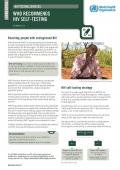
Resource | Fact Sheets,
HIV self-testing should be offered as an additional approach to HIV testing services.
HIV self-testing (HIVST) is an empowering and innovative way to reach more people with HIV and help achieve the first of the United Nation’s 90–90–90 targets – for 90% of all people with HIV to know their status by 2020. Expanded use of HIVST can contribute to these global targets by reaching first-time testers, people with undiagnosed HIV or those at ongoing risk who are in need of frequent retesting.
HIV self-testing is a process in which a person collects his or her own specimen (oral fluid or blood) and then performs
an HIV test and interprets the result, often in a private setting, either alone or with someone he or she trusts.
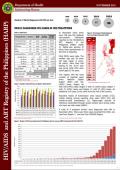
Resource | Fact Sheets,
In November 2016, there were 758 new HIV antibody sero-positive individuals reported to the HIV/AIDS and ART Registry of the Philippines (HARP) [Table 1]. Eighty-nine percent of those were asymptomatic at the time of reporting.
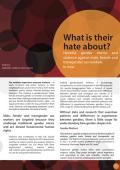
Resource | Publications,
Sex workers experience extreme violence – at work, in prison and police stations, in their neighbourhoods and in their homes, from family members, police, clients, intimate partners and strangers. This violence is gender-based. Male, female and transgender sex workers are targeted because they challenge traditional gender norms and are denied fundamental human rights – to equal protection under the law, protection from cruel, inhuman and degrading treatment, and to the highest attainable standard of health.
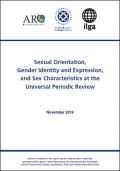
Resource | Publications,
This report provides an overview on how the Universal Periodic Review (UPR) has shaped the protection of the rights of lesbian, gay, bisexual, trans and intersex (LGBTI) persons to date. It also addresses the challenges and the ways to try and turn the UPR into a greater mechanism to protect the rights of LGBTI persons on the ground.
While it may not be the best tool for immediate change, it can start the ongoing processes at the national level and open up new avenues for engaging governments on issues related to sexual orientation, gender identity, gender expression and sex characteristics (SOGIESC). Over its first two cycles, the UPR has positively evolved as a truly multi-stakeholder process. Both states and civil society have gone through a learning process in order to work not only with their respective peers, but also together.





